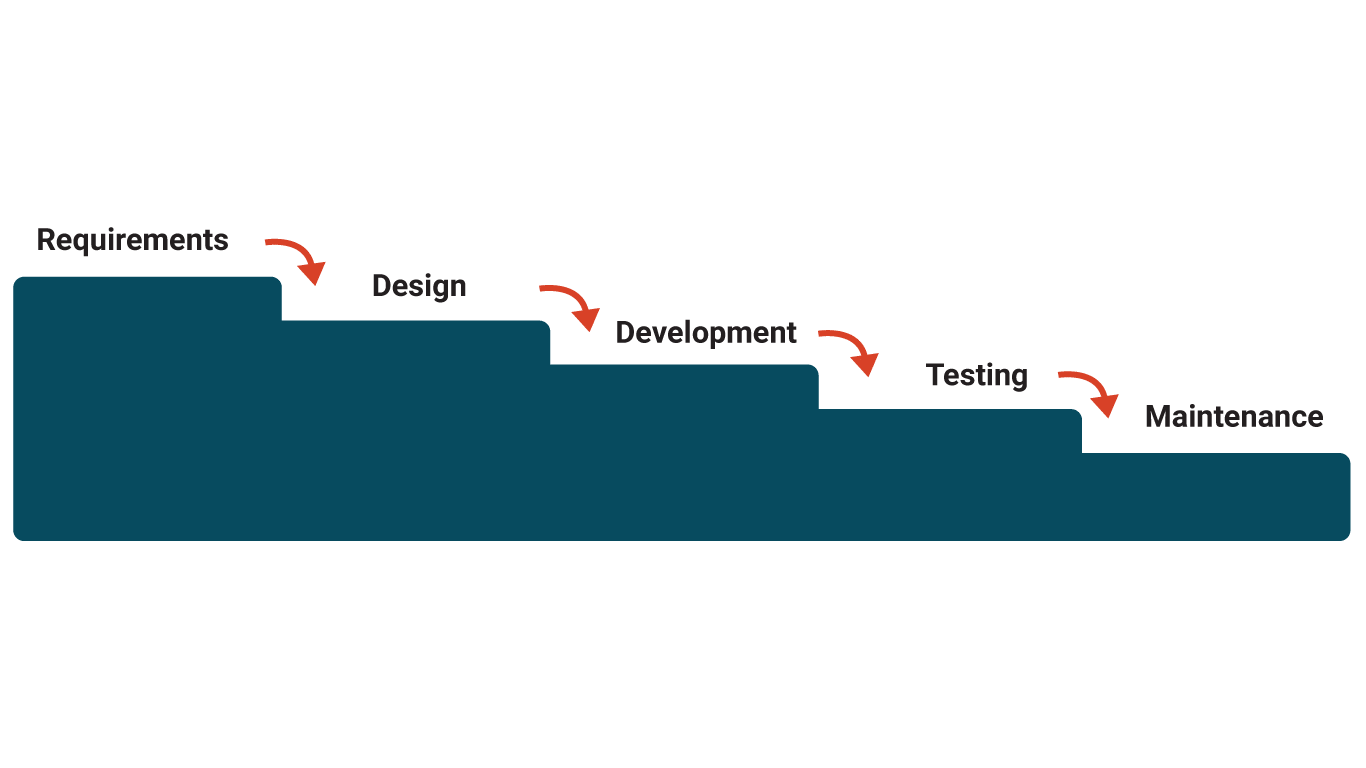“Enjoying success requires the ability to adapt. Only by being open to change will you have a true opportunity to get the most from your talent.” – Nolan Ryan
Much like the great pitcher Nolan Ryan, modern software developers have realized that the ability to adapt is the key to success. It’s great if you can throw a 110mph fastball, but if you don’t change your strategy from pitch to pitch the batters will figure out how to hit pretty quickly. Whoever adapts wins!
Many software developers have begun to realize the path to success is similar in their discipline as well. What used to be common practice, the Waterfall Method, was a bit like developing your game plan ahead of time and then sticking to it. While great in theory, it can often lead to challenges when things don’t go exactly as planned.
The Waterfall (traditional) Method
Now considered a legacy method of software development, the Waterfall process design requires planning all features and content of the end product beginning before any coding begins. Then the project moves to development, and then testing. After bugs are worked out, the final project is delivered. All parts of the project move through the stages of development together as a group. 
It can seem like a great plan, but larger software projects can take a long time to complete independent of development method. Technology moves quickly, opinions change and best practices evolve. Any number of challenges that could have been solved with a more flexible process can crop up at final delivery of the product. Such as unexpected differences in look and feel.
Getting your planning done before moving to execution can be great for many things like making dinner or planning your next vacation. However, for complicated deliverables like websites and software the rigidity of the waterfall process can feel more stifling than prudent.
Iterative Development
A solution to these sorts of challenges has been invented by necessity, frustrated developers and clients the world over. Iterative development is a method of creating software that breaks down a larger project into smaller sets of deliverables or ‘iterations’. Iterations are comprised of distinct sets of features of the final product, done in groups, usually in order of priority. Each of these feature sets goes through its own design, planning, development, testing and delivery stages before moving to the next iteration.
This process often starts with a minimum viable product, or MVP. An MVP might consist of a log-in screen and the primary function of a web app. After that small build is established and user tested, the team begins developing other features of the product, like a customer service interface or content library. Those later features might be critical to the product before it releases to the public, but user testing can begin much earlier and focus on specific areas of the project as they’re released. Even if it’s just for testing or research, the early launch can be greatly beneficial to stakeholders.

Timing is everything.
Getting feedback earlier in the process helps shape not only the features being tested but also the features that have yet to be developed. It also can sometimes allow them to launch to the public earlier and go live, as maybe some features aren’t necessary for the day one launch and can be added later. In extreme cases, timing could even affect the viability of the product. No one wants to get beat to market by a competitor.
Iterative development also minimizes the amount of risk at any given point in time. This process provides for short term, often weekly reviews of what’s been done and what’s happening next. This can help stakeholders feel more connected to the development process and know exactly what’s being done with their time and money.
In Review
Ultimately, the flexibility of iterative development often leads to a final product that more closely fits the vision of the stakeholders and the needs of their users. This increased level of communication between developers and the stakeholders, and the stakeholders and their users ensures a more well adapted final product when compared to the waterfall method.
Iterative Development allows you to
- Release functional software quickly
- Deliver increased business value with each iteration
- Continuously reprioritize and adjust your software as the needs of the market shift and evolve
If you have a project in mind or just want to explore how you could improve the quality of your existing software workflows, click below to schedule a free consultation with one of our iterative development experts!





